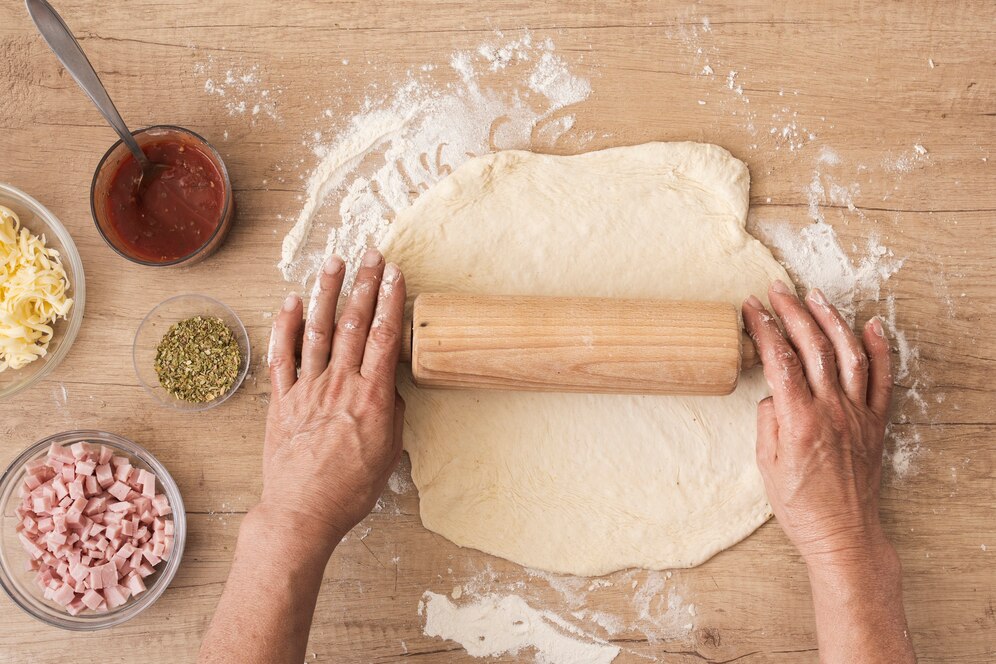Phyllo dough, also known as filo or fillo dough, is a versatile ingredient in many savory and sweet dishes. From flaky baklava to savory spanakopita, this thin, delicate pastry can elevate any recipe. While store-bought phyllo dough is convenient, making your own at home is surprisingly simple and adds a personal touch to your dishes. Here’s an easy homemade phyllo dough recipe that yields crisp, flaky results every time.
Why Make Phyllo Dough at Home?
Making phyllo dough from scratch may seem daunting, but it’s a rewarding process that allows you to achieve a superior texture and flavor. Homemade phyllo dough is fresher, free from preservatives, and can be customized to your liking. Plus, it’s a fun culinary project that’s worth the effort!
Ingredients
To make homemade phyllo dough, you’ll need the following ingredients:
- 2 cups all-purpose flour, plus extra for kneading
- 5 teaspoons olive oil
- ½ teaspoon fine salt
- ¾ cup warm water (110°F or 43°C)
- 2 teaspoons white wine vinegar
For the Starch Mixture:
- ½ cup cornstarch
- 2 tablespoons all-purpose flour
Directions
1. Prepare the Dough:
Start by placing 2 cups of all-purpose flour in a large mixing bowl. Create a well in the center of the flour and drizzle in the olive oil. Add the fine salt to the well.
Next, pour in the warm water and white wine vinegar. Mix the ingredients together until the dough begins to come together and pulls away from the sides of the bowl, which should take about 1 to 2 minutes.
2. Knead the Dough:
Transfer the dough onto a lightly floured surface. Knead the dough until it becomes smooth, adding just enough flour to prevent it from sticking to your hands or the work surface, which should take about 2 to 3 minutes.
Continue kneading for an additional 5 minutes until the dough is supple and elastic. This step is crucial for achieving the desired texture in your phyllo dough.
Wrap the dough ball in plastic wrap and let it rest at room temperature for 1 to 2 hours. This resting period allows the gluten to relax, making it easier to roll out the dough.
3. Divide and Roll Out:
After the dough has rested, divide it into twenty 25-gram portions using a kitchen scale. Roll each portion into a ball and place them on a plate. Cover the dough balls with plastic wrap to keep them from drying out as you work.
Mix the cornstarch and 2 tablespoons of all-purpose flour together in a bowl. This starch mixture will help keep the layers of dough from sticking together.
4. Roll the Dough:
Dust a work surface and the first dough ball with the cornstarch mixture. Flatten and roll out the dough into a circle about 5 inches in diameter. Dust the rolled dough again with the cornstarch mixture.
Stack this circle on a plate and repeat with the next 4 dough balls, dusting each layer with more cornstarch mixture. This will create a stack of 5 circles.
Once you have your stack, roll it out further into a larger circle, approximately double in size, turning as you go to maintain a round shape. Carefully separate each layer and lay out the circles, applying more cornstarch mixture as needed. Restack the layers.
5. Form the Phyllo Sheets:
Roll the 5-layer stack until it’s paper-thin and about 10 to 12 inches in diameter. Place the rolled dough on a sheet of parchment paper, and cover it with another piece of parchment. Gently roll up the dough and wrap it in plastic wrap. Refrigerate the rolled dough until you’re ready to use it.
6. Repeat:
Repeat the rolling and stacking process with the remaining 15 balls of dough in batches of 5.
Tips for Success
- Keep the Dough Covered: To prevent the dough from drying out, keep the dough balls covered with plastic wrap or a damp cloth while you work.
- Use a Light Touch: When rolling out the dough, use a light touch to avoid tearing. The goal is to get the dough as thin as possible without it breaking.
- Flour Generously: Dust the work surface and the dough with the cornstarch mixture frequently to prevent sticking.
Final Thoughts
Homemade phyllo dough is a labor of love that adds a special touch to your recipes. While the process may take some time, the results are well worth it. With this easy homemade phyllo dough recipe, you can create delicious, flaky pastries that are sure to impress. Enjoy your culinary creation and the satisfaction of knowing you made it from scratch!

